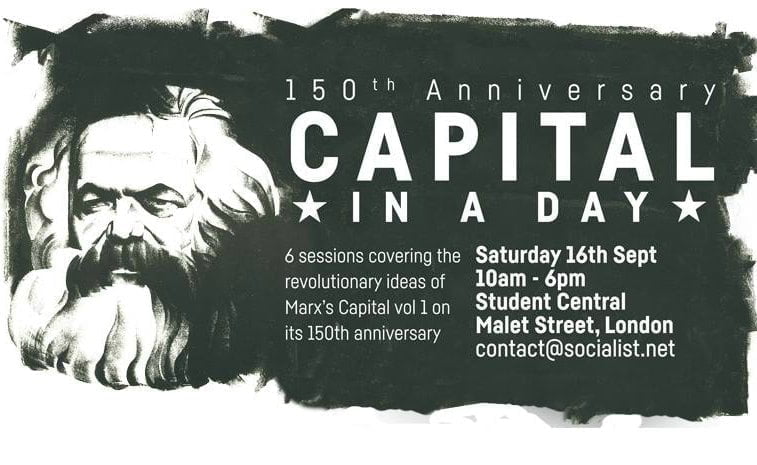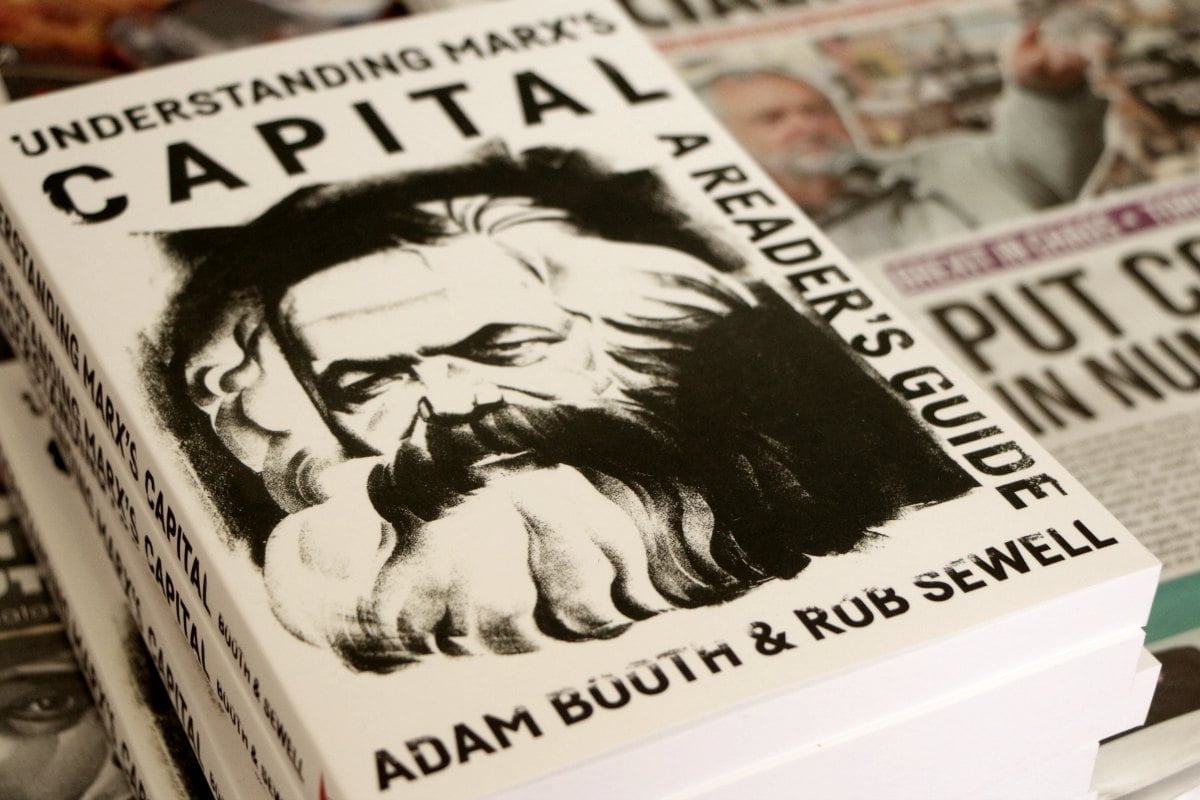To commemorate the 150th anniversary of the publication of Volume One of “Das Kapital”, Wellred Books are releasing a new book, Understanding Marx’s Capital: a reader’s guide, which aims to introduce a new generation to the revolutionary ideas contained within the pages of Marx’s magnum opus. Order your copy today!
There are not that many books that are more relevant today than when they were written. One such book is Capital by Karl Marx, originally published in September 1867.
To commemorate the 150th anniversary of the publication of Volume One of “Das Kapital”, Wellred Books are releasing a new book, Understanding Marx’s Capital: a reader’s guide, which aims to introduce a new generation to the revolutionary ideas contained within the pages of Marx’s magnum opus.
After the financial meltdown of 2008 there was a sharp rise in sales for Capital around the world as people sought an explanation for something that mainstream economists and establishment politicians had said could never happen again. Gordon Brown had famously asserted that New Labour and their banker friends had “abolished boom and bust”. He was 50% correct: they had abolished the boom, for sure!
Marx, from beyond his grave in Highgate Cemetery, was able to explain through his writings why the crisis had occurred; why it was always going to occur; and, most importantly of all, what must be done about it. Meanwhile the “experts” were left floundering. Paul Krugman, the Nobel Prize winning economist, spoke for his ignorant peers when he declared that everything that had been taught in his field had been “spectacularly useless at best, and positively harmful at worst.
Marx intended that Capital should have a readership far beyond that which would normally read books about economics. Indeed, it is far more of a book about politics and history than you might otherwise expect.
Nevertheless, we must face facts: a 19th century book of over a thousand pages is never going to be an easy or quick read. Marx’s analysis of capitalism was such a massive undertaking that only Volume One was ever completed and published in Marx’s lifetime. Yet it is important that those being drawn into radical political activity today conquer this mountain of ideas and draw the necessary conclusions: that the capitalist system is crisis-ridden and must be overthrown.
The publication of Understanding Marx’s Capital: a reader’s guide by Wellred Books is therefore intended to provide intrepid young activists with a road map into this great work. In this new book, we are presented with short and clear summaries of the key points and themes being presented in each chapter of the first volume of Capital, and how these ideas relate to the modern capitalist economy around us.
The rise of automation and machinery; the nature and future of money; and the prevalence of precarious work within the “gig economy”: all of these, and much more, are discussed in relation to the analysis and ideas contained within Capital.
Whether you are new to Marxism or a veteran socialist; a student or an activist; a lone reader or part of a discussion group: there is something for everyone in this book. Those who are beginners will gain an accessible introduction to Marxist economics; those who have read Capital before will be able to take up each section of Volume One with new vigour and gain additional understanding from it.
Reading groups in particular will benefit greatly from using this guide as a companion to their reading – but it can also be read as a standalone book in order to understand how capitalism works.
Alongside a chapter-by-chapter analysis, the book also includes Leon Trotsky’s key article Marxism in our time, which was written in 1939 as an introduction to an abridged version of Capital. Meanwhile, as an appendix, there are three in-depth articles dealing with the question of why capitalism goes into crisis, and how we can explain the current global economic crisis, which shows no sign of disappearing after almost a decade of stagnation, slump, and austerity.
Taken together with another recent book from Wellred, What is Marxism?, what we have here is an excellent and readable introduction to the ideas and methods of Marxism, and these apply to the world we live in today.
One thing is clear: Marx’s Capital is even more relevant today than it was 150 years ago in 1867. And so too is the alternative to the nightmare of capitalist – the fight for socialist revolution.

Marx’s Capital in a day
To celebrate the 150th anniversary of Capital, and to help guide readers through its pages, Socialist Appeal and the Marxist Student Federation are hosting Capital in a Day, with six sessions – involving talks and discussions – covering the revolutionary ideas contained within Marx’s Capital (Volume One) and their relevance in understanding today’s world of crisis-ridden capitalism.
Date: Saturday 16th September 2017
Time: 10am-6pm
Venue: Student Central (formerly ULU), Room 3E
Malet Street, London
Tickets: £5 unwaged/student; £10 waged; £20 solidarity
See below for timetable and tickets.
This event is open to all – whether you are a seasoned Marxist or completely new to socialist ideas. All sessions are designed to be accessible to those new to Marxism, and no prior knowledge or reading of Capital is required.
Links are provided below to an online reading guide that can be read in conjunction with Capital, Volume One or used as an introduction to the day’s discussions.
Copies of Capital and a reading guide, along with a range of other Marxist literature from Wellred Books, will be available to purchase on the day. You can also find the book online for free here.
Timetable and recommended reading
09:30-10:00: Registration
10:00-10:30: 150 years on – the relevance of Marx’s Capital today (introduction)
10:30-11:30: Commodities and the Labour Theory of Value (chapter 1)
11:30-12:30: What is money? (chapters 2-3)
12:30-13:30: Lunch
13:30-14:30: Exploitation, wages, and profit (chapters 4-8 and 9-11 and 16-22)
14:30-15:30: Machinery, technology, and productivity (chapters 12-14 and 15)
15:30-16:00: Break
16:00-17:00: Inequality – the dynamics and origins of capitalism (chapters 23-25 and 26-31)
17:00-17:30: Capitalist crisis and the revolutionary alternative (closing remarks)






